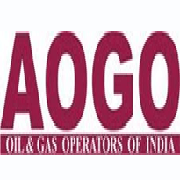-
Government convenes meeting with airlines to discuss GAGAN system
With the domestic airlines not showing any keenness to avail the over Rs 700-crore GPS-Aided Geo Augmented Navigation (GAGAN) system even after nearly 18 months of its official launch, the Government would now hold discussions with all stakeholders for its mandatory enabling.
Aviation regulator, Directorate General of Civil Aviation (DGCA) has convened a consultation meeting with all stakeholders including airlines here tomorrow to discuss the issue.
GAGAN system, which is said to make airline operations more efficient and cut down costs as it reduces separation between aircraft, increase air safety and fuel efficiency, was officially launched by Civil Aviation Minister Ashok Gajapathi Raju in July last year.
The National Civil Aviation Policy, announced by the Government in June this year, makes it mandatory for all aircraft being registered in India from January 1, 2019 to be GAGAN enabled.
However, most aircraft currently registered in India are not equipped to utilise this technology.
“A stakeholder consultation has been planned on the subject on December 21 to plan implementation and address bottlenecks, if any (in the effective use of Gagan system),” a Public Notice issued by the DGCA last week said.
Jointly developed by Indian Space Research Organisation (ISRO) and Airports Authority of India (AAI), at an investment of Rs 774 crore, the new system offers seamless navigation to the aviation industry.
However, for availing the system, airlines are required to make their fleet the system compliant, which entails huge investments.
Sources say that while smaller aircraft like ATRs and Bombardiers which are currently in the Indian carriers’ fleet are already equipped with such a system, bigger planes like Airbus A320, A330, Boeing 737, B777 and B 787s, among others, need to be retrofitted.
Eight major domestic carriers — Air India, Air India Express, Jet Airways, JetLite, IndiGo, SpiceJet, GoAir, Vistara and AirAsia — together have 427 such planes currently in operations.
“An airline will have to shell out as much as Rs 1-2 crore per aircraft to install such a system. Going by the total of number of these type of planes with the Indian airlines, it requires a minimum investment of over Rs 400 crore,” they said.
The issue assumes significance as many airlines/ operators have ordered more aircraft which may not necessarily be equipped with the required airborne equipment, the DGCA notice said adding, equipped operators may also not have trained pilots/ obtained necessary approvals to utilise this technology.
The benefits of GAGAN include improved efficiency, direct routes, increased fuel savings, approach with vertical guidance at runways, significant cost savings due to withdrawal of ground aids and reduced workload of flight crew and Air Traffic Controllers.
At the time of launch, the Government had claimed that the implementation of GAGAN technology would immediately benefit 50 operational airports in the country.
Currently, there are 75 airports which handle scheduled flight operations. Chase Roullier Womens Jersey
Share This



























































































